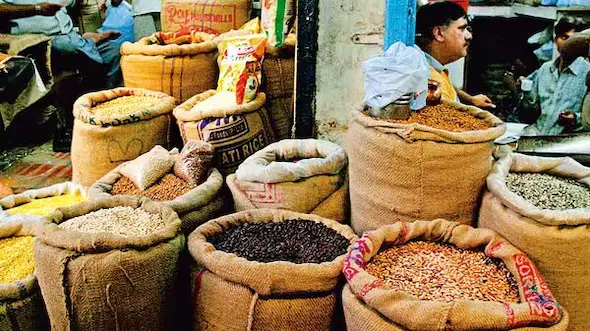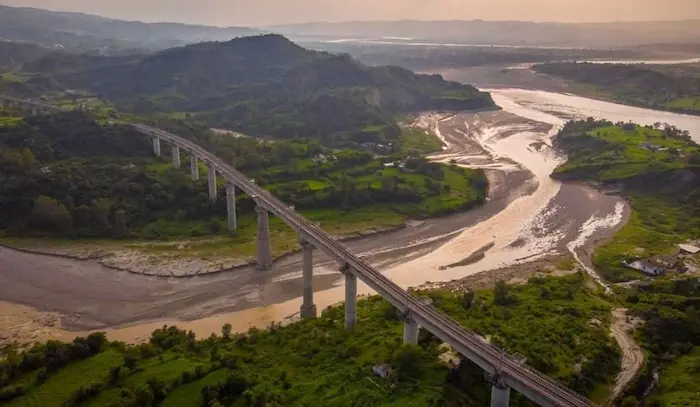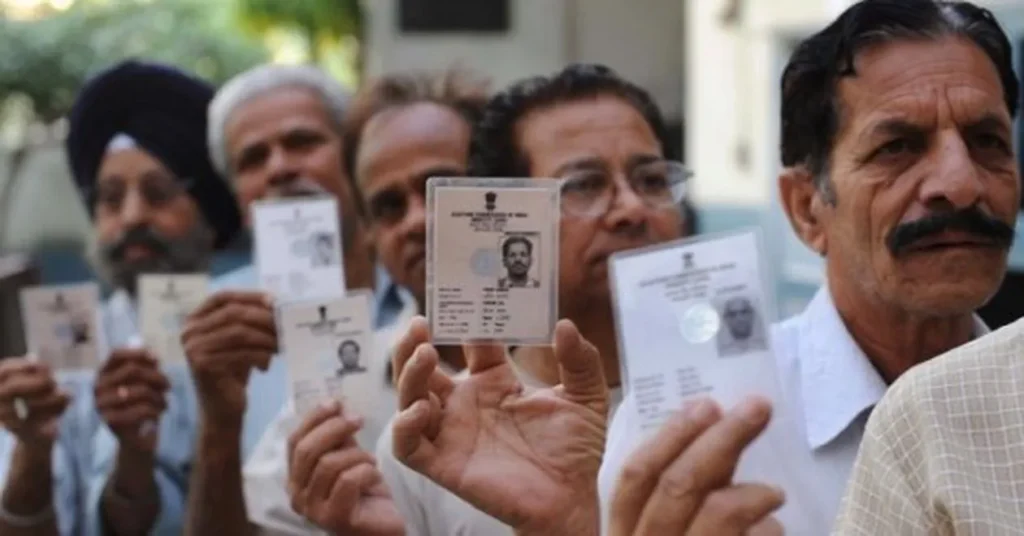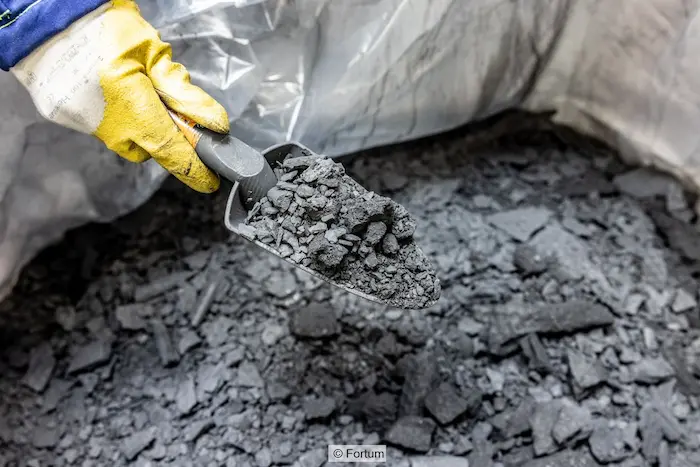1. Leptospirosis Outbreak in Ernakulam, Kerala – Science and Technology

Why in News?
A recent leptospirosis outbreak in Ernakulam district, Kerala, has claimed five lives, triggering public health concerns and underlining the urgent need for zoonotic disease awareness and prevention, particularly during the monsoon season.
Key Concepts & Scientific Details
1. What is Leptospirosis?
- A zoonotic bacterial infection caused by Leptospira interrogans.
- Commonly referred to as “rat fever” in India.
- Affects both humans and animals.
2. Transmission Pathway
- Spread through urine of infected animals like:
- Rodents (especially rats)
- Cattle
- Dogs
- Pigs
- Bacteria can enter the human body via:
- Cuts or abrasions on skin
- Mucous membranes
- Soles of the feet, especially when exposed to contaminated water or soil.
Most outbreaks in India occur during monsoon or post-flooding periods, especially in poorly drained areas.
Clinical Symptoms and Disease Progression
| Phase | Symptoms |
|---|---|
| Phase 1 | Fever, chills, muscle aches, vomiting, headache. |
| Phase 2 (in severe cases) | Jaundice, liver/kidney failure, meningitis, internal bleeding, respiratory distress. |
- Severe Form: Known as Weil’s Disease, it can be life-threatening.
Treatment & Prevention
- Treatment:
- Early-stage: Oral antibiotics like doxycycline or penicillin.
- Severe cases: Require hospitalization and IV antibiotics.
- Prevention:
- Avoid contact with flooded or contaminated water.
- Use protective gear (boots/gloves) during fieldwork or cleaning post-flood.
- Control rodent populations.
- Ensure safe sanitation and drainage.
Summary
The leptospirosis outbreak in Ernakulam reflects the growing challenge of zoonotic infections during India’s monsoon season. As a climate-sensitive disease, it reveals the urgent need for public health awareness, early detection, and environmental hygiene. Preventive strategies and community engagement are critical in curbing future outbreaks.
Exam Connect – Possible Questions
Prelims
1. Leptospirosis is caused by which of the following pathogens?
A. Virus
B. Protozoa
C. Bacterium
D. Fungus
Answer: C. Bacterium
2. What is the primary mode of transmission of Leptospirosis?
A. Airborne droplets
B. Ingestion of contaminated food
C. Contact with urine of infected animals
D. Mosquito bites
Answer: C. Contact with urine of infected animals
3. Which of the following conditions is most conducive to the spread of leptospirosis?
A. Cold and dry weather
B. Arid desert conditions
C. Warm and humid climate with water stagnation
D. High-altitude snowy areas
Answer: C. Warm and humid climate with water stagnation
Mains
1. Leptospirosis is an emerging public health threat in India’s monsoon season. Discuss the causes, consequences, and preventive measures necessary to manage such zoonotic diseases.
2. Zoonotic diseases highlight the interdependence of human and environmental health. How can India strengthen its surveillance and response systems for such outbreaks?
3. With increasing climate variability, vector- and water-borne diseases are on the rise. Evaluate India’s readiness to tackle health emergencies like the leptospirosis outbreak in Ernakulam.
2. Price Support Scheme (PSS) for Moong and Urad – Economy

Why in News?
The Union Ministry of Agriculture has approved procurement of:
- Moong and Urad in Madhya Pradesh, and
- Urad in Uttar Pradesh,
under the Price Support Scheme (PSS) to protect farmers from price crashes during harvest season.
About the Price Support Scheme (PSS)
What is PSS?
- A procurement-based market intervention under PM-AASHA (Pradhan Mantri Annadata Aay Sanrakshan Abhiyan).
- Ensures farmers receive Minimum Support Prices (MSP) for their crops when market prices fall below MSP.
- Focuses on pulses, oilseeds, and copra.
Nodal Agencies:
- Implemented through:
- NAFED (National Agricultural Cooperative Marketing Federation of India)
- FCI (Food Corporation of India)
- In coordination with state governments
How It Works:
- Crops are procured at MSP when open market prices dip below MSP.
- Procurement Centers are set up at APMCs and other government-notified locations.
- Only crops meeting Fair Average Quality (FAQ) norms are eligible.
- Procurement continues until market prices stabilize.
About PM-AASHA Scheme
| Feature | Details |
|---|---|
| Launched | September 2018 |
| Ministry | Ministry of Agriculture & Farmers Welfare |
| Objective | Ensure remunerative prices for farmers’ produce |
| MSP Principle | MSP fixed at 1.5 times the cost of production (based on C2 or A2+FL costs) |
| Components | PSS (Price Support Scheme) PDPS (Price Deficiency Payment Scheme) PPSS (Private Procurement and Stockist Scheme) | |
Key Crops Under Procurement
Moong (Green Gram)
| Parameter | Details |
|---|---|
| Type | High-protein pulse; grown mainly in Kharif season |
| Soil | Prefers well-drained loamy to sandy-loam soils |
| Temperature | Optimal range: 25–35°C |
| Duration | Short crop: 60–75 days |
| Crop Rotation | Common rotation: Moong → Wheat |
| Leading States | Rajasthan, Maharashtra, Madhya Pradesh, Andhra Pradesh, Uttar Pradesh |
Urad (Black Gram)
| Parameter | Details |
|---|---|
| Type | Mainly Kharif crop, also grown as Rabi in South India |
| Soil & Climate | Warm, humid climate; well-drained loamy soil |
| Temperature | Tolerant to heat, but not waterlogged areas |
| Crop Rotation | Grown with rice or wheat |
| Key States | Uttar Pradesh, Madhya Pradesh, Andhra Pradesh, Tamil Nadu |
Significance of PSS for Farmers
- Price Protection: Shields farmers from price volatility during harvest gluts.
- Market Access: Reduces exploitation by middlemen by ensuring direct procurement.
- Incentive for Pulses Cultivation: Helps meet India’s protein security and reduce dependence on pulse imports.
- MSP Enforcement: Makes MSP meaningful by operationalizing procurement, not just declaring prices.
Challenges in Implementation
- Limited awareness among small farmers.
- Access issues to procurement centers.
- Strict FAQ norms often lead to rejection of produce.
- Slow procurement and payment delays in some states.
Summary
The government’s approval for Moong and Urad procurement under PSS reflects a critical intervention to stabilize farmer incomes, especially during bumper harvests when prices dip. Through tools like PM-AASHA, the government aims to create a reliable market mechanism and support crop diversification toward high-protein pulses.
Exam Connect – Possible Questions
Prelims
1. The Price Support Scheme (PSS) is a component of which umbrella scheme?
A. PM-KISAN
B. PM-AASHA
C. PM-Fasal Bima Yojana
D. E-NAM
Answer: B. PM-AASHA
2. Which agency is primarily responsible for procurement under the PSS?
A. NABARD
B. NITI Aayog
C. NAFED
D. SIDBI
Answer: C. NAFED
3. Which of the following pulses is commonly grown during the Kharif season?
A. Masoor
B. Moong
C. Peas
D. Gram
Answer: B. Moong
Mains
1. What is the Price Support Scheme (PSS)? Evaluate its effectiveness in ensuring price stability and income security for pulse farmers in India.
2. Discuss the challenges in operationalizing MSP-based procurement in India. How does PM-AASHA attempt to address these challenges?
3. With increasing demand for protein-rich food and concerns over import dependency, how can schemes like PSS and PM-AASHA promote pulses cultivation in India?
3. Tawi River – Geographical and Cultural Significance – Geography

Why in News?
A joint rescue operation by police and SDRF teams successfully saved nine individuals trapped in the Tawi River in Jammu, following a sudden surge in water levels due to heavy rainfall—highlighting both the hydrological risks and regional importance of the river.
Geographical Profile of Tawi River
| Parameter | Details |
|---|---|
| Origin | Kalpas Kund, located in Seo Dhar near Bhaderwah, Doda district, Jammu & Kashmir |
| Course | Flows through Sudh Mahadev, Udhampur, and Jammu before entering Pakistan’s Punjab province to merge with the Chenab River |
| Length | Approx. 141 km |
| Tributaries | Includes Bhuteshwari (Birma), Duddhar, and Jajjhar |
| Catchment Area (India) | About 2,168 sq. km, covering districts of Jammu, Udhampur, and parts of Doda |
Urban Relevance: The Jammu Connection
- The Tawi River bifurcates Jammu city:
- Old Jammu town is built on a hill ridge above the river.
- New Jammu town lies across the river on the opposite bank.
- It serves as the primary drinking water source for the entire city of Jammu.
- Floods or seasonal water surges in the river pose significant urban risk.
Cultural and Religious Significance
- Referred to as “Surya Putri” (Daughter of the Sun) in ancient texts.
- Considered sacred by the local population.
- Hosts pilgrimage routes and several temples along its course, reinforcing its spiritual value.
Environmental & Disaster Concerns
- Flash floods during heavy monsoons due to:
- Steep gradients in upper catchments.
- Unregulated urbanization and encroachments along the riverbanks.
- Risk of siltation, pollution, and reduced flow during dry months.
- Needs real-time flood monitoring, riverfront management, and catchment conservation.
Summary
The Tawi River is not just a geographic feature but an integral part of the cultural identity and urban sustainability of Jammu. With origins in the Doda district and eventual merger with the Chenab, it plays a crucial hydrological, ecological, and spiritual role. The recent incident serves as a reminder of the importance of disaster preparedness in riverine regions prone to flash flooding.
Exam Connect – Possible Questions
Prelims
1. The Tawi River is a tributary of which major river?
A. Ravi
B. Jhelum
C. Indus
D. Chenab
Answer: D. Chenab
2. The Tawi River originates in which district of Jammu & Kashmir?
A. Poonch
B. Doda
C. Udhampur
D. Reasi
Answer: B. Doda
3. What is the approximate length of the Tawi River within Indian territory?
A. 80 km
B. 141 km
C. 200 km
D. 300 km
Answer: B. 141 km
Mains
1. Discuss the geographical and cultural significance of the Tawi River in the Jammu region. How does it influence urban planning and water security in the region?
2. Rivers such as the Tawi are central to both ecological balance and urban resilience. Evaluate the role of riverine disaster management in safeguarding cities like Jammu.
3. How can integrated river basin management approaches help conserve rivers like Tawi while ensuring sustainable urban growth in sensitive Himalayan regions?
4. SC Ruling on Attorney-Client Privilege – Polity

Why in News?
The Supreme Court of India has recently ruled that lawyers cannot be summoned or prosecuted solely for offering legal advice to their clients, as this violates the attorney-client privilege and threatens the independence of the legal profession.
Key Legal Principles and Context
1. Attorney-Client Privilege
- A fundamental legal principle that ensures confidentiality of communication between a lawyer and their client.
- Encourages clients to speak freely and honestly, which is essential for legal representation.
- Recognized globally as a cornerstone of the right to a fair trial and due process.
2. Indian Legal Framework
- Protected under Section 127 & 129 of the Indian Evidence Act, now re-codified as the Bharatiya Sakshya Adhiniyam, 2023.
- Lawyers are prohibited from disclosing:
- Any communication made to them in confidence by a client.
- Legal advice provided in professional capacity.
- Exceptions:
- Client consents to disclosure.
- Lawyer is aware of the client using legal advice to commit an illegal act.
Case Background
- Involved a Gujarat-based lawyer, who was summoned by the police for providing legal advice to a client in a bail matter connected to a loan dispute.
- Supreme Court held the summon unjustified, stating that:
- Legal counsel does not constitute criminal complicity.
- Professional advice, even if controversial, is protected unless it abets an illegal act.
Significance of the Supreme Court Ruling
| Dimension | Implication |
|---|---|
| Judicial Integrity | Reinforces independence of the Bar, protecting legal professionals from coercive misuse of state power. |
| Rule of Law | Safeguards the constitutional right to legal representation under Article 22 and the right to a fair trial. |
| Ethical Practice | Encourages fearless legal advocacy, essential for public interest litigation and constitutional challenges. |
| Prevents Chilling Effect | Prevents undue pressure on lawyers that may hinder them from taking up sensitive or politically charged cases. |
Comparative Perspective
- Similar privileges exist in UK, US, and European Union, often considered part of human rights jurisprudence.
- Indian courts, including Delhi, Bombay, and Karnataka High Courts, have echoed this position in previous rulings.
Summary
The Supreme Court’s reaffirmation of attorney-client privilege is a major step toward protecting the autonomy of the legal profession, enabling lawyers to act without fear of reprisal. This ruling strengthens the democratic framework by reinforcing confidential legal consultation, which is vital for justice delivery, especially in sensitive and high-profile matters.
Exam Connect – Possible Questions
Prelims
1. Which of the following laws codifies the principle of attorney-client privilege in India as of 2023?
A. Advocates Act, 1961
B. Legal Services Authority Act, 1987
C. Bharatiya Nyaya Sanhita, 2023
D. Bharatiya Sakshya Adhiniyam, 2023
Answer: D. Bharatiya Sakshya Adhiniyam, 2023
2. Under Indian law, a lawyer can disclose client communication only when:
A. The client is involved in a property dispute
B. The client is under arrest
C. The communication involves an illegal act
D. The lawyer has been subpoenaed by any court
Answer: C. The communication involves an illegal act
3. Attorney-client privilege primarily protects which of the following rights?
A. Right to education
B. Right to privacy and fair trial
C. Right to property
D. Right against self-incrimination
Answer: B. Right to privacy and fair trial
Mains
1. What is attorney-client privilege? Discuss its significance in safeguarding the right to a fair trial and the independence of the legal profession in India.
2. In light of recent judicial pronouncements, evaluate the role of the judiciary in balancing state authority with the rights of legal professionals.
3. How do professional ethics and confidentiality contribute to the effective functioning of the legal system? Discuss with reference to the Supreme Court’s ruling on summoning lawyers.
5. Enabling Voting Rights for Migrants in India – Polity

Why in News?
With Bihar preparing for elections and reporting one of the lowest voter turnouts (56%) in the 2024 Lok Sabha polls—primarily due to high out-migration—the issue of voting rights for migrants has re-emerged as a critical electoral and democratic reform challenge.
Key Concepts & Context
1. Scale of Migration in India
- Migration Rate (2021): 28.9% of India’s population.
- Types of Migrants:
- Intrastate migrants (~85%)
- Interstate migrants
- Reasons for Migration:
- Marriage (especially women)
- Employment (especially in Bihar, UP, Jharkhand, Odisha)
2. Core Challenge
Migrants—both within and across states—often lose the opportunity to vote due to:
- Physical absence from their home constituencies.
- Lack of registration at their new place of residence.
- Informal employment, which restricts travel flexibility.
- Lack of transport and poll-day support systems.
Proposed Electoral Solutions
| Category | Target Group | Proposed Measures |
|---|---|---|
| Intrastate Migrants | Majority of India’s migrants | – Statutory holidays on polling day |
- Special transport facilities
- Workplace-based voter facilitation |
| Interstate Migrants | Daily wage earners, seasonal workers | – Remote Electronic Voting Machines (RVMs) - Postal ballots for migrants (pilot-tested)
- Pre-registration portals for eligible voters |
| Women Migrants | Women who migrate post-marriage | – Targeted enrollment drives - Simplified residency proof mechanisms at destination |
| Overall Systemic Reforms | All migrant groups | – Inter-state coordination for voter databases - Mobile electoral units in urban migrant hubs
- Inclusion in One Nation, One Voter ID debate |
About Remote Electronic Voting Machine (RVM)
- Developed by ECI and Bharat Electronics Ltd.
- Allows migrants to vote remotely without changing constituency.
- Pilot demonstrations held, but rollout delayed due to logistical, legal, and political concerns.
Why This Matters
- Democratic Inclusion: Voting is a constitutional right under Article 326; all eligible citizens must have access.
- Migration-Responsive Governance: Helps create inclusive policies for labor, housing, and welfare.
- Electoral Equity: Prevents vote suppression of low-income or mobile populations.
- Strengthening Federalism: Enhances citizen-state relationship across locations and migration types.
Summary
India’s growing migrant population—particularly in high out-migration states like Bihar—requires urgent electoral reform to ensure they can exercise their voting rights. Through a combination of RVMs, postal ballots, targeted registration for women, and polling-day support measures, electoral participation can be significantly enhanced, deepening the roots of representative democracy.
Exam Connect – Possible Questions
Prelims
1. Which of the following best describes a Remote Electronic Voting Machine (RVM)?
A. An internet-based voting platform for NRIs
B. A mobile EVM to allow interstate migrants to vote in their home constituencies
C. A tool for polling agents to track votes
D. A machine used for postal ballots
Answer: B. A mobile EVM to allow interstate migrants to vote in their home constituencies
2. Which Article of the Indian Constitution guarantees the right to vote?
A. Article 14
B. Article 19
C. Article 326
D. Article 21
Answer: C. Article 326
3. What percentage of India’s migrants are classified as intrastate migrants?
A. 50%
B. 60%
C. 75%
D. 85%
Answer: D. 85%
Mains
1. Migration is emerging as a barrier to electoral participation in India. Discuss the structural and legal reforms needed to enable voting rights for interstate and intrastate migrants.
2. What role can technology play in strengthening voter inclusion in India? Evaluate the potential and limitations of Remote Electronic Voting Machines (RVMs).
3. Women migrants are often excluded from voter rolls post-marriage. Suggest institutional mechanisms to ensure their effective political participation.
6. Axiom-4 Mission & India’s Leap in Human Spaceflight – Science and Technology

Why in News?
In a historic development, Group Captain Shubhanshu Shukla, an Indian Air Force officer, became the first Indian in 41 years to cross the Karman line aboard the Axiom-4 mission, launched by SpaceX’s Dragon capsule from the Kennedy Space Center, Florida. This marks a new era in India’s human spaceflight capability since Rakesh Sharma’s mission in 1984.
Key Highlights of the Axiom-4 Mission
| Feature | Details |
|---|---|
| Astronaut | Group Captain Shubhanshu Shukla |
| Agency | Axiom Space in partnership with SpaceX |
| Launch Vehicle | Falcon 9 rocket |
| Capsule | Crew Dragon |
| Destination | International Space Station (ISS) |
| Altitude Achieved | Crossed the Karman Line (100 km), the boundary of outer space |
| Significance | First Indian to do so since 1984 |
Strategic Significance for India
1. Reviving India’s Human Spaceflight Legacy
- First Indian since Rakesh Sharma (1984, Soyuz-T11) to reach outer space.
- Symbolic revival ahead of India’s Gaganyaan mission.
2. Knowledge Transfer for Gaganyaan
- Data, training protocols, and in-orbit experience from Axiom-4 will aid in:
- Astronaut conditioning
- Systems validation
- Operational collaboration
- Gaganyaan’s uncrewed test flights scheduled before 2027 crewed mission.
3. Global Collaboration
- ISRO’s involvement marks a shift from passive observation to active partnership in commercial missions.
- Demonstrates India’s strategic alignment with private space entities.
About the Gaganyaan Programme
| Parameter | Details |
|---|---|
| Agency | ISRO |
| Goal | Send a 3-member crew into low-Earth orbit (~400 km) for 3–7 days |
| Timeline | Crewed mission expected by 2027 |
| Tech Components | Human-rated GSLV Mk-III, Environmental Control & Life Support System (ECLSS), Crew Escape System |
| Future Vision |
- Indian Space Station by 2035
- Moon Mission with Indian astronauts by 2040 |
Broader Impact
Scientific and Strategic Gains
- Strengthens India’s space diplomacy and technological autonomy.
- Adds to geopolitical prestige among spacefaring nations.
Space Economy Boost
- India holds ~2% of global space economy, with potential for significant expansion.
- More commercial collaborations with firms like Axiom, SpaceX, Blue Origin.
Youth Inspiration & Talent Pipeline
- Shukla’s achievement can inspire STEM education, research, and entrepreneurship in space sciences.
Summary
The successful Axiom-4 mission with Shubhanshu Shukla represents a milestone in India’s space journey, reviving interest in human spaceflight after four decades. It not only signals India’s readiness for Gaganyaan, but also reflects the country’s aspirations to become a space superpower, both in technological capability and economic contribution to the global space economy.
Exam Connect – Possible Questions
Prelims
1. Who was the first Indian to go to space?
A. Kalpana Chawla
B. Shubhanshu Shukla
C. Sunita Williams
D. Rakesh Sharma
Answer: D. Rakesh Sharma
2. The Karman line is commonly accepted as the boundary of outer space at an altitude of:
A. 80 km
B. 90 km
C. 100 km
D. 120 km
Answer: C. 100 km
3. Axiom-4 mission was launched using which spacecraft?
A. Soyuz-TMA
B. Dragon Crew Capsule
C. Starliner
D. Gaganyaan
Answer: B. Dragon Crew Capsule
Mains
1. Discuss the significance of India’s involvement in international space missions like Axiom-4 for the future of its indigenous human spaceflight program.
2. How can space missions like Axiom-4 contribute to India’s space economy and technological leadership?
3. India’s space aspirations are evolving from launch capabilities to human spaceflight and space stations. Analyze the strategic, scientific, and economic implications of this transition.
7. Black Mass Recovery Technology – Science and Technology

Why in News?
The Technology Development Board (TDB) under the Department of Science & Technology (DST) has extended financial support to commercialize an indigenously developed Black Mass Recovery Technology. This marks a significant leap in battery recycling innovation and India’s goal of achieving critical mineral self-reliance.
Key Concepts & Details
1. What is Black Mass?
- The black mass is a granular, powdery residue left after shredding used lithium-ion batteries.
- It contains valuable battery materials:
- Lithium
- Cobalt
- Nickel
- Manganese
- Graphite
Recovery of these elements is vital for circular economy and sustainable battery supply chains.
2. What is Black Mass Recovery Technology?
- A patented Indian technology to extract battery-grade minerals from the black mass of used Li-ion batteries.
- Uses a dual-mode process:
- Wet process: Chemical leaching and precipitation
- Dry process: Mechanical and thermal treatments
- Recovery Efficiency: 97–99%, meeting global purity specifications.
Why Is It Important?
| Benefit | Explanation |
|---|---|
| Sustainability | Reduces environmental impact by preventing e-waste and mining waste. |
| Resource Independence | Reduces India’s dependency on imported lithium and cobalt. |
| Economic Opportunity | Enables India to become a hub for battery material exports. |
| EV Ecosystem Support | Vital for domestic electric vehicle (EV) and energy storage system (ESS) production. |
Global Context
- India currently imports over 80% of its battery-grade lithium and cobalt.
- Critical minerals are often sourced from geopolitically sensitive regions (e.g., Democratic Republic of Congo, South America).
- Black mass recovery aligns with India’s vision of becoming Atmanirbhar (self-reliant) in energy transition technologies.
Science Behind the Process
- Battery Shredding: Used batteries are disassembled and ground into black mass.
- Chemical Extraction (Wet mode):
- Leaching agents dissolve lithium, cobalt, etc.
- These are then precipitated as high-purity compounds like:
- Lithium carbonate
- Cobalt sulfate
- Nickel sulfate
- Thermal or Mechanical Processing (Dry mode): Removes binders and separates carbon materials like graphite.
Summary
India’s Black Mass Recovery Technology is a landmark innovation that promotes e-waste recycling, critical mineral self-sufficiency, and clean energy adoption. With support from the Technology Development Board, this indigenous technology strengthens India’s capacity to build a green, circular economy while positioning itself as a leader in the global battery materials supply chain.
Exam Connect – Possible Questions
Prelims
1. What is the primary purpose of Black Mass Recovery Technology?
A. Solar energy generation
B. Extracting precious metals from old coins
C. Recovering critical minerals from used lithium-ion batteries
D. Purifying river water using nanotechnology
Answer: C. Recovering critical minerals from used lithium-ion batteries
2. Which of the following elements is not typically found in black mass?
A. Lithium
B. Manganese
C.Copper
D. Graphite
Answer: C. Copper
3. The Black Mass Recovery initiative is financially supported by which body under DST?
A. CSIR
B. DRDO
C.Technology Development Board
D. NITI Aayog
Answer: C. Technology Development Board
Mains
1. What is Black Mass Recovery Technology? Discuss its role in promoting a circular economy and reducing India’s dependence on imported critical minerals.
2. India’s EV and renewable energy ambitions depend on sustainable access to critical raw materials. How can indigenous recycling technologies help India achieve resource security?
3. Discuss the environmental and economic advantages of battery recycling technologies in the context of India’s clean energy transition.

